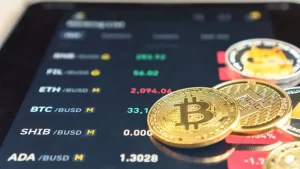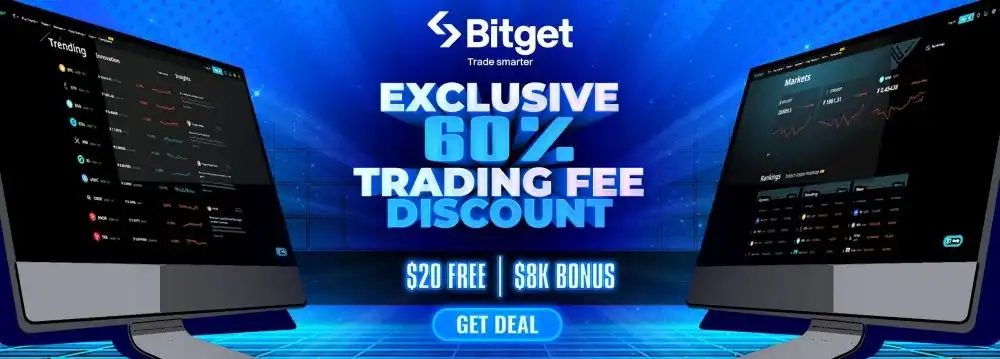Ready to start your Bitcoin journey? Sign up for OKX, Binance, or Bitget today and take your first step into the world of cryptocurrency!
OKX:https://okx.com/join/8798539
Binance:https://accounts.binance.com/register?ref=1031203493
Bitcoin’s recent surge past $100,000 has ignited the crypto market, turning many long-held investments into substantial gains. For astute investors, this milestone sparks the important question: how do I convert these digital riches into real-world money? Even if you’re not planning to sell right now, understanding your options for cashing out your crypto is a smart move.
This guide will walk you through the various ways to safely and efficiently convert your cryptocurrency into fiat currency. We’ll break down the different methods, highlighting their advantages and potential drawbacks, so you can make informed decisions.
Keep in mind that the availability and legality of these methods can vary significantly depending on where you live. This overview is a general starting point; always check local regulations and consult with financial advisors for tailored advice.
Understanding the Basics: From Crypto to Cash
Cashing out cryptocurrency essentially means converting your digital assets into more stable forms of value. This could be traditional government-issued currencies like the US dollar or the Euro, or stablecoins like USDT or USDC, which are designed to mirror the value of fiat currencies. This process allows you to realize the value of your crypto gains in a less volatile form.
Why Cash Out? Common Reasons
Investors choose to convert their crypto to cash for several key reasons:Securing Profits: After a significant price increase, selling allows you to lock in your gains and ensure they’re safe.
Meeting Financial Needs: Cash provides immediate funds for everyday expenses, new investments outside of crypto, or other financial obligations.
Diversifying Your Portfolio: Moving some of your wealth from crypto to other assets like stocks or real estate can help balance your investments and reduce overall risk.
Managing Risk: Reducing or eliminating your crypto holdings can lessen your exposure to market downturns, especially in a famously volatile environment.Your Options for Converting Crypto to Fiat
There are several established ways to turn your cryptocurrency into cash:Centralized Exchanges: Platforms like OKX, Binance, and Bitget act as intermediaries, allowing you to sell your crypto for fiat currency, which you can then withdraw to your bank account.
Peer-to-Peer (P2P) Marketplaces: Services like Paxful directly connect buyers and sellers, enabling you to exchange crypto for fiat through various agreed-upon payment methods.
Bitcoin ATMs: These physical kiosks allow you to exchange Bitcoin (and sometimes other cryptocurrencies) for cash. They’re typically found in major urban centers.
Crypto Debit Cards: Offered by companies like Crypto.com and BitPay, these cards let you spend your crypto directly or withdraw cash from regular ATMs, functioning much like traditional debit cards.Each method has its own set of advantages, fees, and processing times. The best choice for you will depend on factors like convenience, security concerns, and what’s available in your region.
Exploring Your Cash-Out Methods
Using Cryptocurrency Exchanges: A Familiar Route
Centralized cryptocurrency exchanges (CEXs) – think Binance, Kraken, OKX,Bitget and Coinbase – are the go-to platforms for many retail investors looking to convert their digital assets back into traditional money. They offer an experience similar to familiar online banking platforms, making the process relatively straightforward without needing to delve into the complexities of crypto wallets or private keys.
Popular Exchanges by Region:Global Powerhouses:
Binance: One of the largest globally, offering a wide array of cryptocurrencies, competitive fees, and advanced trading features.
OKX: A major player in the APAC region, providing a wide range of cryptocurrencies, advanced tools, and a focus on security.
Bitget: Known for its user-friendly platform, Bitget also provides copy trading features, allowing you to follow and replicate professional traders’ strategies.
Asia-Pacific Focus:
OKX: A major player in the APAC region, providing a wide range of cryptocurrencies, advanced tools, and a focus on security.
KuCoin: Popular with Asian traders, offering access to many smaller cryptocurrencies (“altcoins”) and features like futures trading and staking.
Bitget: Known for its user-friendly platform, Bitget also provides copy trading features, allowing you to follow and replicate professional traders’ strategies.
European Presence:
Bitstamp: One of the oldest exchanges, established in 2011, offering a reliable platform with a focus on the European market.
Bitpanda: Headquartered in Austria, offering European users access to various digital assets, including cryptocurrencies, stocks, and precious metals.
The Americas:
Gemini: Founded in the US, emphasizing strong security and regulatory compliance, appealing to both individual and institutional investors.Centralized Exchanges: Weighing the Pros and Cons of Cashing Out
Pros:Easy to Use: CEXs offer intuitive platforms that make buying and selling accessible, even for those new to crypto.
High Liquidity: Large trading volumes mean your orders are likely to be filled quickly and at competitive prices.
Customer Support: Many offer support services to help with any questions or issues.
Seamless Fiat Integration: Direct deposits and withdrawals in traditional currencies make the conversion process smooth.
Advanced Tools: Offer features like margin trading for more experienced users.Cons:Security Risks: Holding your crypto on an exchange means you’re vulnerable to potential hacks or security breaches since the exchange controls the private keys.
KYC Requirements: You’ll typically need to complete “Know Your Customer” verification, which involves providing personal information, raising privacy concerns for some.
Custodial Control: You don’t have complete control over your funds as the exchange holds them, potentially leading to issues if the platform faces problems.
Limits and Fees: Exchanges often have withdrawal limits and charge fees, which can reduce the final amount you receive.
Geographical Restrictions: Regulatory issues may prevent certain exchanges from operating in your region.
When selecting a centralized exchange for cashing out, prioritize security measures, understand the fee structure, ensure they support your desired fiat currency, and confirm they operate in your location.

Paxful: The Peer-to-Peer Approach
Peer-to-peer (P2P) cryptocurrency marketplaces, like Paxful, offer a more direct route, connecting buyers and sellers without a central intermediary. This aligns with the core principles of cryptocurrency, promoting financial independence and inclusion, particularly in areas with limited traditional banking access.
Paxful is a leading example, allowing users to directly trade cryptocurrencies with each other, offering a wide array of payment options and strong security features.
How Paxful Works:
Paxful facilitates secure transactions through:Independent Escrow: When a trade begins, Paxful holds the seller’s crypto securely until both parties fulfill the transaction requirements, protecting against fraud.
Fair Dispute Resolution: A dedicated team investigates disagreements to ensure fair outcomes, maintaining trust within the marketplace.
Robust Verification: Paxful uses a tiered verification system (phone, email, ID, address) to enhance security and meet regulatory requirements, allowing users to increase their trading limits.
Popular Cryptocurrencies: Supports major cryptocurrencies like Bitcoin (BTC), Ethereum (ETH), Tether (USDT), and USD Coin (USDC).
Diverse Payment Methods: With over 350 options, including bank transfers, online wallets, and gift cards, Paxful caters to a broad range of preferences.
Global Reach: Operating in numerous countries worldwide, making it a versatile option for international crypto trading.Using Paxful to Cash Out:Create an Account: Sign up for a free account on the Paxful website using your email. Complete the necessary identity verification steps to enhance security and increase your trading limits.
Browse Offers: Use Paxful’s search filters to find suitable offers based on cryptocurrency type, payment method, and the amount you want to trade.
Start a Trade: Select an offer and initiate the trade. Use Paxful’s messaging system to communicate with the seller, confirm details, and get payment instructions.
Secure Escrow: Once the trade begins, Paxful holds the seller’s cryptocurrency in escrow. Make your payment according to the agreed method and the seller’s instructions.
Complete the Trade: After payment, mark the transaction as paid. The seller will verify receipt and release the cryptocurrency from escrow to your Paxful wallet, finalizing the transaction.Best Practices for P2P Crypto Trading:Verify Your Trading Partner: Minimize fraud risk by trading with users who have good reviews and verified accounts. Check their trading history and reputation.
Stick to Platform Communication: Keep all communication within Paxful’s messaging system for transparency and a record in case of disputes.
Follow Payment Instructions Exactly: Avoid delays or cancellations by strictly adhering to the agreed-upon payment terms. Double-check payment details with the seller.
Beware of Scams: Be cautious of deals that seem too good to be true, and watch out for common scams like chargeback fraud. Report any suspicious activity to Paxful support.
Secure Your Account: Use strong, unique passwords and enable two-factor authentication (2FA) to protect your Paxful account. Regularly monitor your account activity for anything unusual.The Benefits of P2P Trading:Wide Range of Payment Options: Paxful supports diverse payment methods, catering to various user needs.
Global Accessibility: Reaches users worldwide, including those in areas with limited banking services.
Potentially Lower Fees: P2P trading can sometimes have lower fees compared to centralized exchanges as there are fewer intermediaries.
Increased Privacy: Transactions can be more private as you may not need to directly link bank accounts in some cases.
Negotiable Terms: You can sometimes negotiate terms directly with the person you’re trading with.The Risks of P2P Trading:Higher Risk of Scams: The lack of a central authority increases the risk of encountering fraudulent individuals.
Dispute Resolution Challenges: Resolving disagreements can be more complex, even with platform support.
Counterparty Reliability: Trading relies on the honesty of the other person, which can vary.
Market Volatility Risk: Delays in payment can expose you to price swings.
Regulatory Uncertainty: Local laws may impact the legality of P2P trading in your region.By following these guidelines, you can navigate P2P marketplaces like Paxful effectively and engage in secure cryptocurrency transactions.
Bitcoin ATMs: Crypto to Cash, Instantly
Bitcoin ATMs (BTMs) are physical kiosks offering a convenient way to buy and sometimes sell Bitcoin and other cryptocurrencies using cash or debit cards. They provide a bridge between the digital and physical worlds, enabling quick transactions without the need for online exchanges.
Finding a Bitcoin ATM Near You:
Platforms like CoinATMRadar provide maps and search tools to locate Bitcoin ATMs, showing their locations, hours, and supported cryptocurrencies. Some operators, like Coinsource, also offer locators on their websites.
What You Need and How to Use a Bitcoin ATM:
Prerequisites:Bitcoin Wallet: You’ll need a Bitcoin wallet (mobile, hardware, or paper) to receive your cryptocurrency.
Identification: Some BTMs require ID verification (like scanning a government-issued ID) to comply with “Know Your Customer” (KYC) rules.Steps:Locate a BTM: Find a nearby ATM using an online locator.
Start a Transaction: Select the option to buy or sell Bitcoin on the ATM screen.
Verify Your Identity: If required, follow the on-screen instructions for ID verification.
Enter Wallet Details: Provide your Bitcoin wallet address by scanning its QR code to ensure accurate transfer.
Insert Cash or Card: Deposit the amount of fiat currency you want to convert into Bitcoin.
Confirm Details: Review the transaction details, including fees and exchange rates, and confirm.
Receive Bitcoin: The Bitcoin will be sent to your wallet, usually within minutes, though network congestion can cause delays.Fees and Other Things to Keep in Mind:
Bitcoin ATMs often have higher fees than online exchanges, typically ranging from 10% to 23% of the transaction. For example, depositing $500 could incur fees of up to $115, leaving you with $385 worth of Bitcoin.
Considerations:Transaction Limits: BTMs have minimum and maximum transaction limits that vary.
Processing Time: While often instant, delays can occur due to network congestion.
Privacy: Anonymity varies; some allow anonymous transactions, while others require full KYC.
Availability: Primarily located in urban areas.Bitcoin ATMs offer a convenient way to buy and sell crypto, especially for cash users. However, be aware of the higher fees, potential verification requirements, and possible delays.
Crypto Debit Cards: Spending Your Crypto in the Real World
Crypto debit and credit cards act as a bridge between your digital assets and the traditional financial system. They allow you to seamlessly use your cryptocurrencies for everyday purchases. These cards convert your crypto holdings to fiat currency at the point of sale, allowing you to use them anywhere standard debit or credit cards are accepted.
A Look at Popular Crypto Cards:Coinbase Card:
Fees: No annual or monthly fees, but standard crypto conversion fees apply.
Availability: United States (excluding Hawaii).
Supported Cryptocurrencies: Supports many cryptocurrencies available on the Coinbase platform.
Credit: Functions as a debit card.
Bybit Card:
Fees: Competitive fees; ATM withdrawals are free up to a monthly limit.
Availability: Primarily Europe (EEA) and the United Kingdom.
Supported Cryptocurrencies: Supports major cryptocurrencies like Bitcoin and Tether.
Credit: Functions as a debit card.
Nexo Card:
Fees: No monthly or annual fees; free ATM withdrawals up to a monthly limit, with a small foreign exchange fee for some currencies.
Availability: Europe (EEA) and other select regions.
Supported Cryptocurrencies: Supports multiple cryptocurrencies.
Credit: Offers a crypto-backed credit line, allowing spending without selling crypto.
Gnosis Card:
Fees: Vary; check the official Gnosis Pay website.
Availability: European Union.
Supported Cryptocurrencies: Supports cryptocurrencies within the Gnosis ecosystem.
Credit: Functions as a debit card.Benefits of Using Crypto Cards:Convenience: Spend crypto easily without manual conversions.
Rewards: Some cards offer cashback or crypto rewards.
Global Acceptance: Usable wherever traditional cards are accepted.Risks of Using Crypto Cards:Volatility: Crypto values fluctuate, impacting the fiat value at the time of transaction.
Fees: Watch out for hidden fees like foreign exchange or ATM charges.
Regulatory Uncertainty: Availability and legality can vary by region.Crypto cards offer a practical way to integrate crypto into daily spending. However, carefully consider fees, availability, and the inherent volatility of cryptocurrencies.

Step-by-Step: Cashing Out on a Centralized Exchange (Coinbase Example)
Cashing out your crypto on a platform like Coinbase is generally straightforward. Here’s a step-by-step guide:
- Create and Verify Your Coinbase Account:Sign Up: Go to the Coinbase website and click “Get Started.”
Provide Information: Enter your name, email, and create a strong password.
Verify Email: Click the link in the confirmation email.
Complete Identity Verification: Provide additional personal information and a government-issued ID to meet regulations, enhance security, and increase limits.2. Link a Payment Method:Go to Settings: Log in, go to “Settings,” and select “Payment Methods.”
Add a Method: Click “Add a Payment Method” and choose from bank account, PayPal, or debit card.
Enter Details: Provide the necessary information for your chosen method.
Verify Method: Follow the verification steps, like confirming micro-deposits.3. Transfer Crypto to Coinbase (If Needed):Access Wallet: If your crypto is elsewhere, go to “Send/Receive” on Coinbase.
Get Coinbase Address: Select “Receive,” choose the cryptocurrency, and copy the address.
Initiate Transfer: Send the desired amount from your external wallet to your Coinbase address.
Confirm Transfer: Wait for network confirmations.4. Sell Cryptocurrency for Fiat:Go to Trade: Click “Trade” or “Buy/Sell” on the dashboard.
Select Sell: Choose the “Sell” option and the cryptocurrency you want to convert.
Enter Amount: Specify the amount to sell.
Choose Deposit Destination: Ensure the funds will go to your fiat wallet (e.g., USD Wallet).
Preview and Confirm: Review the transaction details and confirm.5. Withdraw Fiat to Your Linked Payment Method:Access Portfolio: Go to “Assets” or “Portfolio.”
Select Fiat Wallet: Choose the fiat currency wallet you sold your crypto for.
Initiate Withdrawal: Click “Withdraw” and enter the amount.
Select Payment Method: Choose your linked bank account or PayPal.
Confirm Withdrawal: Review the details and confirm.6. Monitor Transfer and Confirm Receipt:Processing Time:
Bank Account: Typically 1-3 business days.
PayPal: Often instant.
Check Account: Verify the funds have arrived in your chosen account.Additional Considerations:Fees: Coinbase’s fees vary; check their fee page for details.
Security: Enable two-factor authentication (2FA).
Tax Implications: Selling crypto can have tax consequences; consult a tax professional.By following these steps, you can efficiently cash out your crypto on Coinbase.
Understanding the Tax Implications of Selling Crypto
Selling cryptocurrency can have significant tax implications as tax authorities worldwide are increasingly regulating digital assets.
Capital Gains Tax:
In many places, crypto is treated as property for tax purposes. Selling, exchanging, or disposing of it can trigger capital gains tax. The gain or loss is the difference between what you paid for it (basis) and what you sold it for. Short-term gains (held less than a year) are usually taxed at higher rates than long-term gains.
Income Tax:
Certain crypto-related activities are considered income and are subject to income tax. This includes receiving crypto as payment for goods or services, mining rewards, staking rewards, and airdrops. The fair market value of the crypto when you receive it determines the taxable amount.
Record-Keeping is Key:
Accurate records are essential. Keep detailed records of all crypto transactions, including dates, amounts, transaction types, who was involved, and the fiat value at the time of each transaction. This is crucial for calculating gains, losses, and income accurately and for supporting your tax returns if audited.
Tax Reporting Requirements:
Failing to report crypto transactions can lead to penalties. Understand the specific reporting requirements in your country. For example, in the US, the IRS requires you to answer a question about virtual currency involvement on Form 1040 and may require specific forms like Form 8949 and Schedule D for reporting capital gains and losses.
Crypto Tax Software:
Given the complexity, using crypto tax software can be helpful. Platforms like CoinLedger and Koinly connect to exchanges and wallets, automating the calculation of gains, losses, and taxable income and can generate necessary tax forms.
International Considerations:
Tax rules for crypto vary significantly between countries. Be aware of and comply with the specific tax laws in your place of residence.
Conclusion:
Navigating crypto taxes requires careful attention and adherence to the rules. Keep thorough records, understand the difference between capital gains and income, and consider using tax software. Consulting a tax professional specializing in crypto is advisable to ensure you meet all your obligations.

Factors to Consider When Cashing Out:
Keep these factors in mind when cashing out:Withdrawal Fees: Always check the platform’s fees, as they can vary and impact your final payout.
Tax Implications: Be aware of the tax rules in your region, as selling crypto often triggers capital gains or income tax.
Security: Use reputable platforms to avoid scams and always double-check transaction details.
Transaction Time: Consider processing times, as some methods take longer, especially during network congestion.
Supported Currency: Ensure the platform supports your desired fiat currency.
Selecting the Right Network: If transferring crypto, choose the correct blockchain network.
Entering the Right Address: Double-check recipient addresses to avoid irreversible losses.Common Mistakes to Avoid When Cashing Out:
Be careful to avoid these common pitfalls:Sending Crypto to the Wrong Address: Incorrect addresses lead to permanent loss of funds.
Using Untrusted Platforms: Shady platforms increase the risk of scams.
Ignoring Tax Implications: Failing to account for taxes can lead to penalties.
Overlooking Limits and Fees: Neglecting to check withdrawal limits or fees can reduce your payout.
Choosing the Wrong Network: Selecting the wrong network can cause delays or loss of assets.
Delaying Decisions: Waiting too long in volatile markets can result in losses.
Not Securing Accounts: Weak passwords or skipping 2FA expose you to hacking.
Trusting Unverified Counterparties: In P2P, verify reputations to avoid fraud.
Underestimating Processing Times: Misjudging transaction times can cause issues if funds are needed urgently.
Skipping Research on Local Regulations: Ignoring local rules can lead to account freezes or legal issues.Alternative Options: Using Crypto Without Cashing Out
Instead of cashing out, consider these ways to use your crypto:Direct Payments: Pay for goods and services at businesses that accept crypto.
Crypto-Backed Loans: Borrow fiat by using your crypto as collateral on platforms like Nexo or Aave.
Staking and Yield Farming: Earn passive income by locking your crypto in staking pools or DeFi platforms.
Crypto Debit Cards: Spend crypto seamlessly with cards that convert it at the point of sale.
DeFi Participation: Engage in lending, borrowing, or providing liquidity in DeFi.
Donating Crypto: Support charities that accept crypto and potentially gain tax benefits.
Buying Gift Cards: Convert crypto into gift cards for various retailers.
NFT Trading: Buy and sell Non-Fungible Tokens.
Paying for Services: Hire freelancers or pay for subscriptions with crypto.
Saving in Stablecoins: Convert volatile crypto to stablecoins for less volatility.Final Thoughts
Cashing out cryptocurrency is an important part of managing your digital assets, whether you’re securing profits, accessing funds, or diversifying your portfolio. We’ve covered various methods, from centralized exchanges and P2P platforms like Paxful to Bitcoin ATMs and crypto debit cards, each with its own pros and cons.
Remember to understand tax implications, avoid common mistakes, and consider alternatives to withdrawing. By staying informed, prioritizing security, and choosing the right methods for your needs, you can navigate the process safely, efficiently, and maximize the potential of your crypto investments.
Ready to start your Bitcoin journey? Sign up for OKX, Binance, or Bitget today and take your first step into the world of cryptocurrency!




